Playing the ‘Anti-Westernization’ Card: How the Ban on LGBTQ film “Inxeba” was justified in South Africa
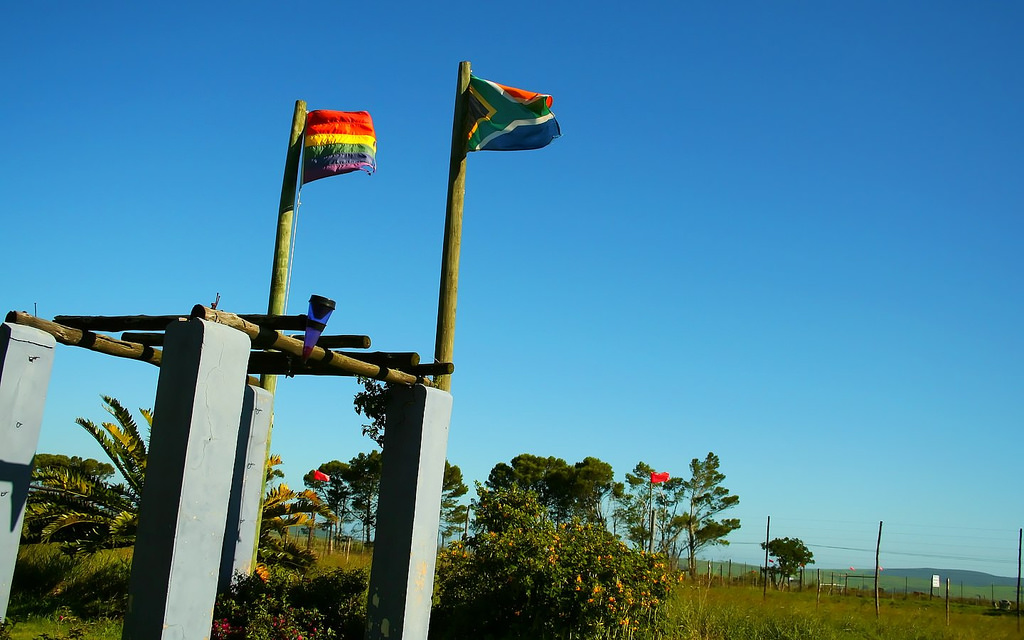 Although South Africa was the first to protect gay rights, the government's relationship with the queer community is less supportive than the side-by-side flags may display. https://flic.kr/p/4gWuCP
Although South Africa was the first to protect gay rights, the government's relationship with the queer community is less supportive than the side-by-side flags may display. https://flic.kr/p/4gWuCP
Although the Xhosa ritual represents a coming of age into “manhood” – initiates repeat “I’m a man” throughout the process – the South African film Inxeba (The Wound) complicates this trajectory by portraying different understandings of masculinity through the film’s three main gay characters. Kwanda (Niza Jay Ncoyini) is a boy sent from his comfortably affluent life in Johannesburg up the mountains of the Eastern Cape to become initiated. There he meets Xolani (Nakhane Toure), who takes care of him during the circumcision process, and Xolani’s friend Vija (Bongile Mantsai), who is also a caregiver — although rougher around the edges. Xolani and Vija’s secret relationship – which for Vija is merely sexual, but has an emotional aspect for Xolani – is eventually found out by Kwanda. The young initiate, in contrast to the caregivers, is more willing to accept his queerness. The intersecting relationship of three gay black man who identify differently with their sexuality reveals film maker John Trengove’s “desire to push back against certain clichéd stereotypes of black masculinity perpetuated inside and outside African cinema.”
In Western international circles, the film was praised as subversive and boundary-crossing. In South Africa, however, screenings of Inxeba were interrupted by mass protests declaring that the film blasphemed Xhosa traditions. The reason behind Inxeba’s controversy is shown in the film itself, through the dichotomy between the values of South African urban youth – such as Kwanda – and the Xhosa elders. In response to the controversy, South Africa’s Film and Publication Board (FPB) “barred the film from public viewing” — a move which the local and international LGBTQ community declared an infringement on gay rights and freedom of speech. Although their claims are true, and the protection of South Africa’s queer is a critically important issue – violent attacks against gay South Africans are increasing in number and severity – the struggle to preserve and support indigenous traditions in South Africa complicates how the government should have responded to Inxeba: the needs of both groups must be addressed, their complicated histories of persecution must be recognized, and the consultation of both communities is essential to tackle the underlying binary of “tradition” and “modernity.”
Navigating the fine line between respecting one’s freedom of expression, and protecting one’s citizens from hate speech and public indecency is a complicated and controversial task in nearly every government. In Apartheid South Africa, however, the line was clearly defined on racial lines: the government sought to fully diminish the voices of Black individuals so the white population could enjoy unrestricted expression and define every aspect of society – including politics, economics, or the entertainment industry. Despite the constitutional protection of free speech – and the legal prohibition of hate speech – instated after colonialism, the censorship of LGBTQ film Inxeba (The Wound) blatantly violated Section 16 of the South African Constitution. The film was released on February 2nd with a rating of 16. On February 18, the FPB re-classified the film as X18, making it illegal to screen anywhere but “locations licensed to screen adult entertainment.” The immediate backlash which ensued on social media showed, however, that “the minimum legal requirements required to have a film classified as X18 were not present.” Newspapers quickly picked up on the backlash against the FPB, and Inexba’s X18 verdict was reversed on March 16. While pressure of international media helped motivate this change, the issue was oversimplified by international sources by placing, on one hand, the progressive LGBTQ community, and on the other, black male South Africans who considered homosexuality incompatible with their ‘culture.’ What these sources miss, however, is the debate over representation – the film was created by a white man, and had considerable Western influence – which complicates the line between censorship and cultural protection, the latter being an integral component in African countries who faced cultural assimilation under colonialism and/or Apartheid.
International media coverage also seemed to overlook the nuances of the film itself, particularly the ways in which the central characters themselves grapple with the contradictions of their sexual orientation and the social mores of their ancestral identity. Indeed, the educated, urban Millennial, whose far more open views on homosexuality may be considered more compatible with Western liberals, is not presented in a heroic, noble, or even particularly likeable manner. The film is ultimately about pain and the tremendous violence (both physical and psychological) people often inflict on those they love. It is far from a romantic narrative of gay characters overcoming social stigma to assert their dignity, nor would any reasonable critic construe it as an “activist” film. Yet, many articles appeared to be regurgitating the same synopsis in their quest to make Inxeba a worthy addition to the canon of global LGBTQ cinema, which often takes closeted homosexuality in a country considered ‘repressive’ and ‘developing’ as its start and end point for gay character development. What these articles often expose is that many left-wing pundits in the West lauding Inxeba for its courage had not actually seen it, and this fits firmly within a worrying film studies tradition that sees works of art for that they “stand for” or “symbolize”, rather than what they actually portray or, more importantly, how they portray it.
While the film gained international acclaim and won numerous awards overseas, many in South Africa are concerned with the depiction of Xhosa initiation rites and circumcision rituals through the “Western gaze.” In South Africa the preservation of Black history and culture is integral – after Apartheid sought to degrade, destroy, and replace it – both in the past and today. Thus, one must address concerns of representation, even though the film ban represents “decades of struggle against homophobia.” However, since the film associates acceptance of queer identity with Western conceptions of modernity – embodied by Kwanda’s cynical attitude towards the Xhosa ritual, and his desire to go back to the big city – it is important to keep in mind the conflation of ‘Western bias’ with ‘queer validation’ that can be used to discredit the film. Although respect of South African traditions is essential, using the name of ‘African tradition’ to justify the oppression of other marginalized groups is wrong. Those who do so reinforce a binary between ‘African traditions’ and queerness that furthers persecution against the latter group in Africa. Further, while the director, John Trengove, is white, many in the cast and production crew are not. To declare Inxeba an entirely Western project is a “slight on the black lead actor Toure and co-script-writers Thando Mqolazana and Malusi Bengu.” Moreover, Wamuwi Mbao – a lecturer at Stellenbosch University – suggests that since most who protested against the film were “heterosexual black men,” their grievances reveal “the fear that one of the foundational sites of black male subjectivity was being symbolically castrated through its proximity to homosexuality.”
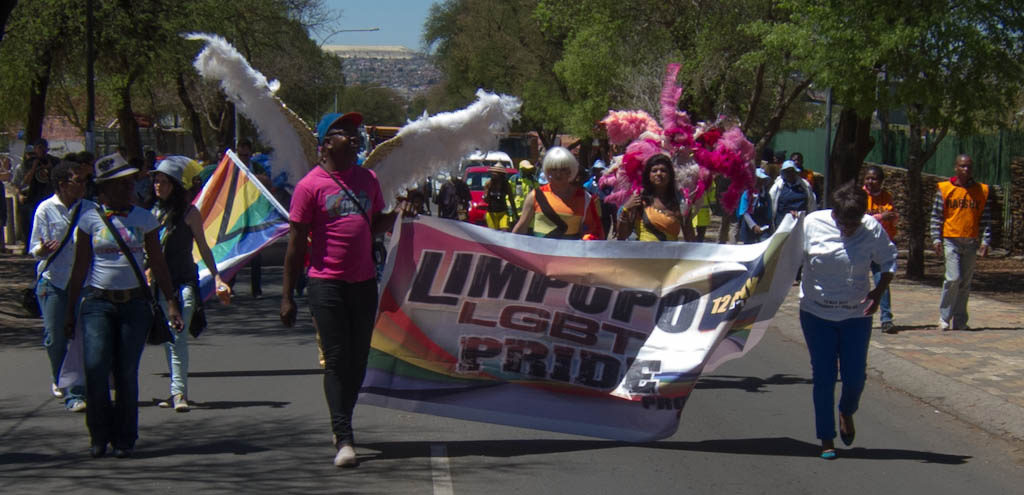
The difficulty of navigating allegations of cultural insensitivity, whilst promoting and protecting LGBTQ rights, complicates the future of queer advocacy in South Africa: how does one protect cultural communities while advocating inclusivity and the acceptance of new, queer members? The answer is not legal protection of LGBTQ people, in specific, or freedom of speech at large — for South Africa’s constitution protects both. The difficulties in implementing such policies lie in the power structures of South Africa’s government, as well as other institutions such as the country’s film board. Despite holding elections, many worry that South Africa is “slid[ing] into authoritarianism” due to entrenched patronage networks which allow certain individuals hegemonic power. This regime hybridization makes decisions about censorship further susceptible to personal bias. Given President Jacob Zuma’s anti-gay sentiments – revealed through numerous homophobic statements – he did little to enforce the few LGBTQ laws he made. Thus, constitutional amendments, while important, have had little effect given the multiple interpretations which can arise, and the power of certain interpretations. Instead, a meaningful consultation must be developed and enforced to inolve LGBTQ representatives in the policy decision-making process, as well as other marginalized groups, to ensure that decisions are not made based on Twitter comments.
Despite South Africa becoming the first country to constitutionally protect LGBTQ peoples in 1996, the lack of consultation and accountability within the government and other institutions makes it difficult to practically carry out such laws. In fact, a five-year report conducted by the Hate Crimes Working group declared the LGBTQ community as the “most discriminated against group” in South Africa. Numerous cases of torture, coercive rape, murder, and other forms of violence against LGBTQ people validate such statistics; this violence has also increased in recent years. Shortly before Inxeba was banned from most South African movie theatres, queer members of the Shembe Nazareth church were assaulted for their sexuality, forced to “pay a “damage” fee for “shaming” the church,” and finally suspended from it.
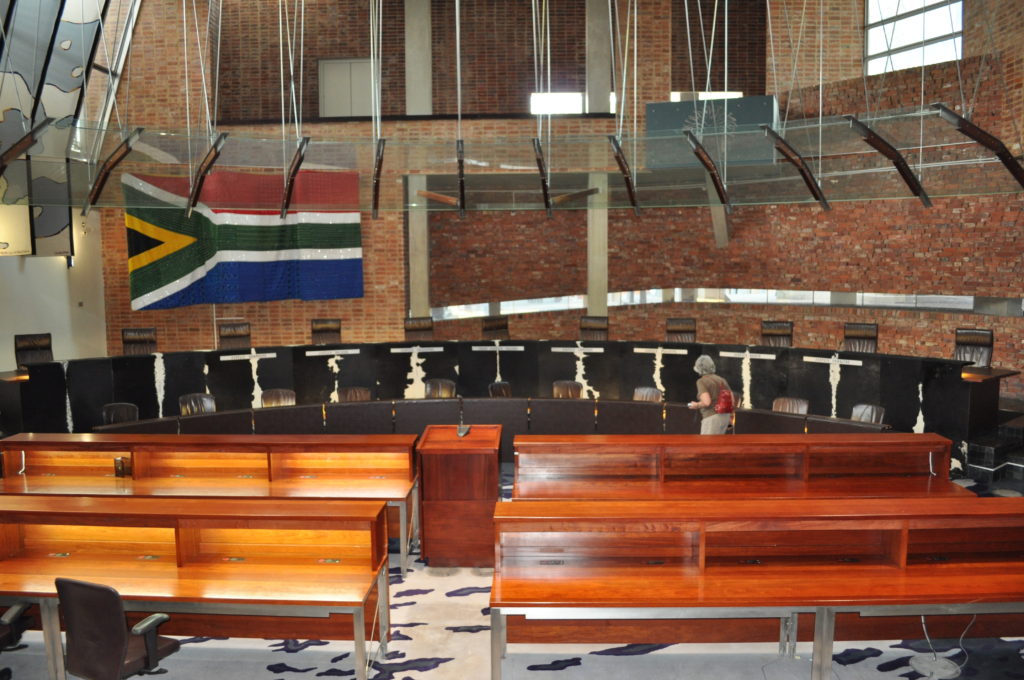
The recent attrocities faced by the South African LGBTQ community heightened anticipation and excitement for Inxeba. However, protests erupted around South Africa on February 2nd, the day of its release, leading numerous cinemas to cancel their screenings. For example, Nu Metro in Canal Walk, Cape Town faced threats of violence and damage to property.” The LGBTQ community, however, mobilized quickly: Gay Radio South Africa (GRSA) created a petition “demanding that the previous age restriction gets reinstated with immediate effect.” Hendrik Baird, the station manager of GRSA, called the FPB “homophobic” and stated his concern “at the capability of FPB to make reasonable decisions based on the ludicrous decision made on Inxeba.” Implicit in Baird’s critique is the lack of accountability and consultation within the FPB. The decision to ban Inxeba was not based on the film’s content, but rather made to appease citizens; the X18 rating change came soon after the protests, and they retracted the change after receiving international backlash. Moreover, Baird’s skepticism towards the FPB’s future decisions shows that the wider problem – navigating constitutional protection of culture and queer rights – has not been addressed, despite eventually changing the rating. The rating reversal did not involve genuine consultation of LGBTQ and Xhosa communities, nor an attempt to reconcile constitutional contradictions. International and domestic backlash drove the change, instead, but decisions made out of resentment and fear do not create lasting peace.
Although the petition accomplished its goals, and many in the LGBTQ community – both locally and internationally – were relieved by the FPB’s rating reversal, other community members believed that the ability to screen the film would not have the socially transformative impact many said it would. While the film unprecedentedly depicts gay love in South Africa, it lacked in other areas. A queer black female filmmaker commented that the film depicted depicts Xhosa men lazily “sitting on the mountain for two weeks holding their genitalia” and, as a whole, “renders the entire cultural rite of passage completely flat.” Another reviewer, Phililie Ntuli, exposes the “Western gaze” which the film “exhibits and submits itself” to. “Having enjoyed a larger viewership in the West than in South Africa” – “it won 19 awards at 44 festivals in more than 25 countries” – the Western ideological influence, Ntuli suggests, was a strategic marketing decision. As a result, international reviews issued high acclaim for the film, but failed to pick up on the Westernized elements. The Toronto Sun didn’t mention the cultural inauthenticity, and the Economist briefly acknowledged that the director was white, but quickly called this complaint “nonsense.”
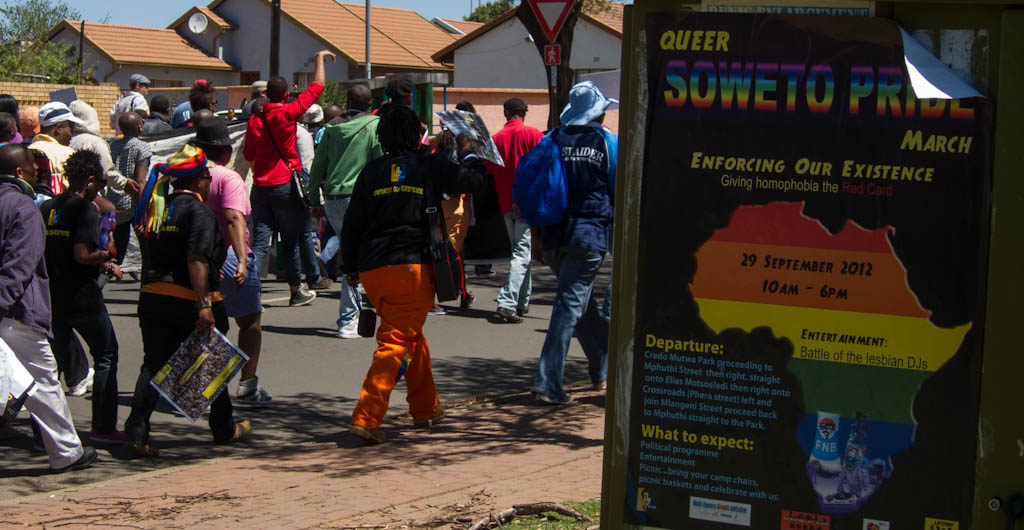
While it’s important to recognize the film’s radical boundary-crossing – and protest against the homophobic silencing of LGBTQ voices, as Ntuli suggests – the inability for international sources to recognize a key component of the Inxeba debate displays the tendency for international media to separate conflicts in Africa into a binary. For example, numerous academic studies reveal how the Darfur conflict is characterized as a fight between “Africans” and “Arabs” in international media. This oversimplification fails to see the complications of citizenship and land rights, divisions between urban and rural, and power differences between Khartoum and the periphery that have severely complicated the conflict and have made it difficult to solve. Given the complexities of identity and representation in South Africa – as well as other African countries – it’s impossible to perfectly appease everyone. Therefore, dialogue must be facilitated between different representative groups to decide what constitutes free speech and what infringes on cultural sovereignty. When this ability is vested in a single person, the results are treacherous. Former President Jacob Zuma’s homophobic remarks legitimized such views and rendered any constitutional protection of LGBTQ people superficial.
Zuma said, in a speech that, “When I was growing up an ungqingili [a gay] would not have stood in front of me. I would knock him out,” both exemplifying the violence LGBTQ people face, and perpetuating it from a position of power. Although Zuma legalized same-sex marriage in 2017, he called such marriages “a disgrace to the nation and to God”. Zuma’s homophobic remarks reveal the gap between legislative change and social change. Thus, South Africa’s constitution, taken at face-value, protects and supports the country’s LGBTQ community — so ammending the constitution is ineffective. The problem, rather, is rooted personal beliefs of those who have the power to choose whether they want to protect LGBTQ rights under the constitution, or employ censorship laws to infringe upon them.
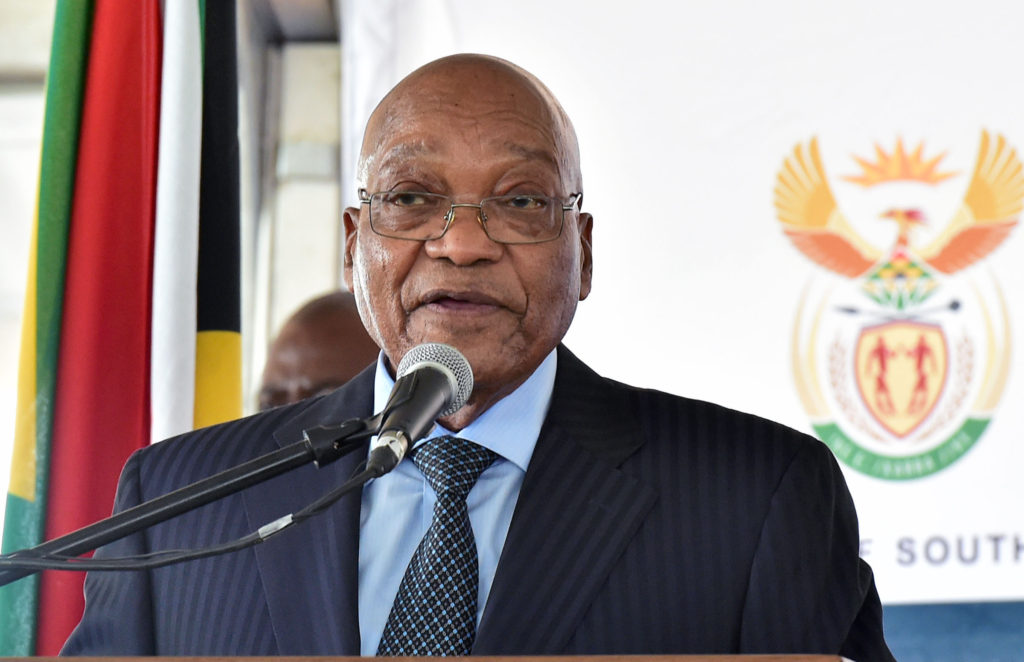
This could, many hope, change with South Africa’s next election. South Africa’s politics are in a state of flux right now. Zuma, who led the African National Congress (ANC) – the party which brought South Africa out of apartheid – for 11 years, resigned in February. Elections will be held in 2019. Charges of corruption against Zuma, specifically, and the ANC at large could end the pary’s 24-year reign. Cyril Ramphosa – the ANC’s new leader – appears to support LGBTQ rights more genuinely than his predecessor. As Chairperson of the South African National AIDS Council (SANAC), Ramphosa has “embraced pro-LGBTI policies.”
However, regardless if it is Ramphosa or another individual who becomes president, South Africa cannot rely on specific individuals to uphold the constitution. The country’s “end of term report” in 2017 recognized the imperative establishment of an “accountability/consequences management framework.” As South Africa undergoes significant change in political leadership now is the time to create mechanisms of accountability within the government and other bureaucracies. Such mechanisms must protect and project the voices of marginalized groups such as South Africa’s LGBTQ community in order to ensure censorship is not employed arbitrarily and without consultation.
Edited by Benjamin Aloi
